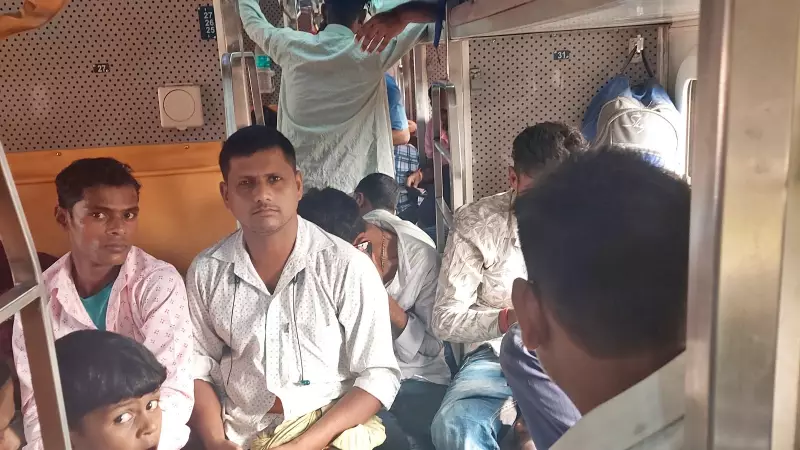
The rhythmic clatter of train wheels on steel tracks creates a familiar soundtrack for millions of migrant workers from Bihar, all heading home for Chhath Puja. This annual exodus tells a story far deeper than just festival celebrations—it's a narrative of survival, identity, and the eternal search for better opportunities.
The Weight of Being Bihari
On crowded train compartments, the air thick with anticipation and exhaustion, passengers carry more than just luggage. They carry the collective identity of being Bihari—a label that comes with both pride and prejudice in India's employment landscape. "People outside see us as laborers, as people who will do any job for money," shares Rajesh Kumar, returning from Delhi after six months away from his family.
Jobs 'Palayan': The Great Migration
The term 'Palayan'—meaning exodus—perfectly captures the scale of this migration. Every year, educated and uneducated workers alike leave Bihar in search of employment, creating one of India's most significant internal migration patterns. The Chhath Puja season merely highlights this continuous movement.
What Drives the Migration?
- Limited local opportunities: Despite educational qualifications, Bihar struggles to provide adequate employment
- Higher wages elsewhere: Construction, manufacturing, and service jobs in metropolitan cities offer better pay
- Seasonal patterns: Many workers time their returns with major festivals and agricultural seasons
The Emotional Toll of Constant Movement
Behind the cheerful festival preparations lies the emotional cost of separation. Children grow up with absent parents, elderly parents manage households alone, and relationships strain under the pressure of distance. The train journey home becomes more than travel—it's a bridge between two worlds, connecting the professional identity in cities with the personal identity in villages.
Chhath Puja: The Anchor Point
This ancient festival dedicated to the Sun God serves as a powerful magnet drawing migrants home. The religious significance is deeply interwoven with family bonds and cultural roots. "No matter where we work, Chhath brings us back to our rivers, our families, and our traditions," explains Sunita Devi, returning from Punjab with her two young children.
The Festival's Economic Impact
- Transport systems experience peak demand
- Local markets in Bihar see unprecedented sales
- Remittances flow into the state economy
- Temporary employment surges in service sectors
Beyond the Festival: Seeking Solutions
While the homecoming brings temporary joy, the underlying issue of outward migration persists. The challenge lies in creating sustainable employment within Bihar that can keep talent and labor local while maintaining the cultural connections that festivals like Chhath represent.
As trains snake their way across the Indian landscape, they carry not just passengers, but the hopes of an entire community—hopes for better days, for reunions that last longer, and for a future where migration becomes a choice rather than a necessity.





